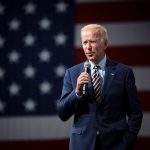
Uranium cleanup report falls on few ears
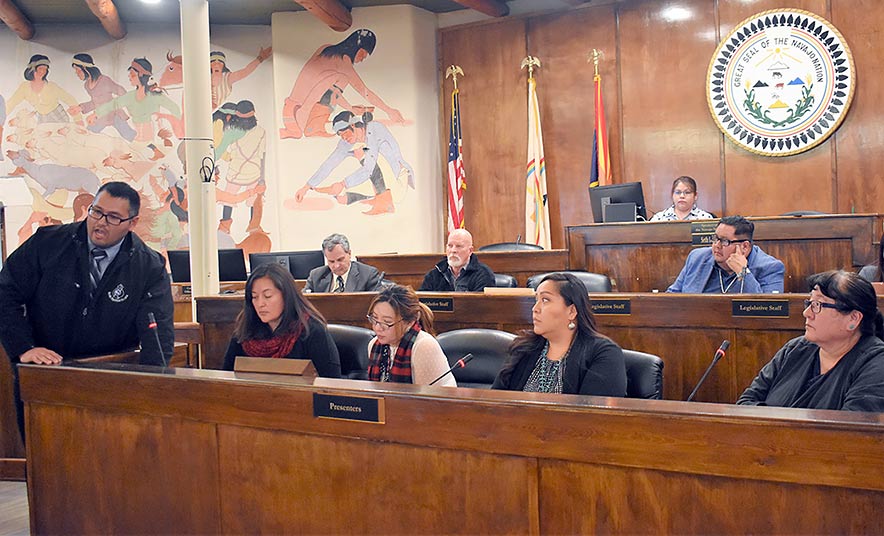
NAVAJO TIMES | RIMA KRISST
Navajo Nation EPA Director Oliver Whaley, left, reports on uranium cleanup efforts along with a panel of experts on the Diné Uranium Remediation Advisory Committee.
WINDOW ROCK
Uranium cleanup on Navajo is still a major undertaking that impacts the lives of many, and the Navajo Environmental Protection Agency continues to work on these sites — even with criticism and little support from the 24th Navajo Nation Council.
During Thursday’s Naabik’iyati’ meeting, Navajo EPA gave an update report on the cleanup of the more than 500 abandoned uranium mine and mill sites on the Navajo Nation.
The Navajo Superfund Program is an entity regulated under Navajo EPA that addresses all hazardous waste sites on Navajo. Under the Navajo Comprehensive Environmental Response, Compensation, and Liability Act of 2008, also known as CERCLA, Navajo EPA has the authority to address contamination caused by hazardous substances released on Navajo. “That includes abandoned uranium mines,” explained Michelle Yazzie, environmental engineer, who has worked for the U.S. EPA as a remedial project manager and is part of the Navajo Superfund Program. She also has 22 years’ experience in radiation and hazardous waste sites remediation.
Although the U.S. EPA has counted 523 abandoned uranium sites, the Navajo AML has a higher number. But Navajo EPA states they can only go after actual mine site claims on the Navajo Nation. “Of that 523 number, 225 sites are being funded for assessment at this stage,” said Yazzie. “What we mean by that is with enforcement authority under CERCLA we have gone after potential responsible parties, or in this case the federal government. We have settlement funds and PRP funds to address 225 sites.”
That means there are 298 sites which have no funding allocated for cleanup. There are also sites where the responsible company has been identified and has come to a settlement with the U.S. government, such as the 55 Tronox settlement sites, of which 42 are on Navajo. She also mentioned Cyprus Amax, which is responsible for 94 sites on the Navajo Nation. “All of the technical work has to be communicated to the community members,” said Yazzie on the process. “We have an obligation to get feedback from communication. We also are mandating that cultural values like fundamental law coincide with the cleanup approach.”
Tenille Begay Sr., environmental specialist with Navajo EPA, explained Cyprus Amax Minerals Co. — the largest U.S.-owned mining company — is responsible for approximately 20 percent of the abandoned uranium sites on Navajo. In a 2017 consent decree, the company also agreed to take on 17 “orphaned” mines, meaning their operators have either gone out of business or are unknown, due to their proximity to the Cyprus Amax properties.
The 94 Cyprus Amax mines are grouped into three categories. Group 1 includes 32 mines of which 10 are identified as priority sites and are currently undergoing draft evaluations. Group 2 includes 32 mine sites located in the Red Valley Chapter and draft evaluations are currently under review. Group 3 includes 28 mines in northeastern Arizona and near Monument Valley. These will be addressed last. This group will be going under biological and archeological clearance.
“Two of those sites that are under Cyprus (as) the PRP (potentially responsible party) is labeled Western Nuclear Mines,” said Yazzie. “Cyprus bought them out so they’re responsible for those sites.” When it comes to the Tronox Mines, there are 34 mines in Cove and the surrounding community.
There are 20 mine sites in Eastern Agency, some on allotment lands and some bordering the Navajo Nation. There is one site on BLM land and U.S. EPA Region 6 doesn’t have jurisdiction, so it’s not being addressed. One site known as the Colbert Mine Site sits in the vicinity of Smith Lake and Coyote Canyon communities. The danger that lingers from these abandoned sites, especially in Cove, is the unclaimed waste piles.
The waste, laden with uranium and other heavy metals that cause health effects, is washed into drainages by rain and snow runoff, and moves towards the community of Cove. Navajo EPA said they are greatly concerned by the potential for the migration of the contamination through the surface water pathways.
All of these sites pose a risk to humans and the environment and are recommended for engineering evaluation and cross-analysis, said Navajo EPA.
Only a few delegates hear report
In the end, the handful of delegates who stayed to listen to the half-hour report on uranium cleanup did not have much of a discussion, as opposed to the lengthy discussion after the first report about human trafficking.
While Navajo EPA was placed as the second report on the agenda, the group had to wait until the very end of the meeting because delegates failed to make the motion to hear the uranium report. When Speaker Seth Damon asked for the motion, delegates either did not hear Damon or weren’t paying attention. It wasn’t until the end when a couple of delegates noticed Navajo EPA sitting in the gallery waiting.
By that time quorum was lost and it was up to the rest of the delegates whether they wanted to stay and listen. While Navajo EPA gave their report, more delegates trickled out before the report was done. “We go out and visit communities and we’ve done a lot of work. What we get when we come here is, we ‘don’t share information,’ ‘We don’t know what’s going on,’ and there’s no one here!” said an agitated Oliver Whaley, Navajo EPA director. “I can’t help but feel this is a joke,” he said. “We are doing our jobs. If you want the information, we’ll share it. We need support. You need to trust us. I’m sick of it. I’m tired of it. It’s a tough job and it all reflects on me and my staff.”
Dariel Yazzie, environmental program supervisor for Navajo EPA, said he expressed his feelings to their oversight committee chair, Delegate Rickie Nez, and he’d hoped the delegate would have stayed to hear the report in order to elaborate on how they can fit Navajo cultural identity into the cleanup of uranium mines.
“I’m embarrassed and offended because the request was to bring a report back to this group, and the people I was hoping would hear it left,” said Yazzie. “I have a hard-working group here that challenged themselves to get educated, and challenged themselves to come back and learn this process,” he said. “We get ridiculed and chastised, but that’s OK. But it’s getting back to the community members. To reiterate my director ‘I need your support.’”
Delegate Nathaniel Brown said when you come back to work on Navajo you have to grow a thick skin, and said they have to work together with the Council. He said his own family has been impacted by uranium exposure, and said he’s met with other Navajo families who suffer from this, and he suggested another lawsuit against the federal government.
“I just want to say ‘Thank you,’” said Brown. “I stand with you guys when you have meetings in Monument Valley. However we can help you guys, I stand ready.”
Delegate Wilson Stewart wasn’t happy with Whaley’s comments made inside the Council Chamber in front of former chairman Peterson Zah, especially after Whaley left the chamber before the delegate could respond. “There are times you will not get praised,” said Stewart. “If he stood by his words he wouldn’t have walked out. He would’ve sat right here and pay attention to these words. That’s what I look at.”

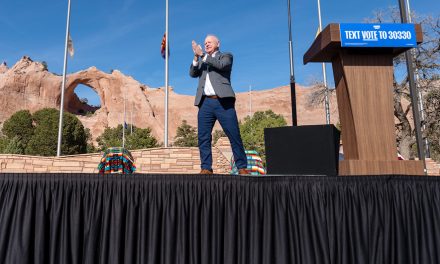
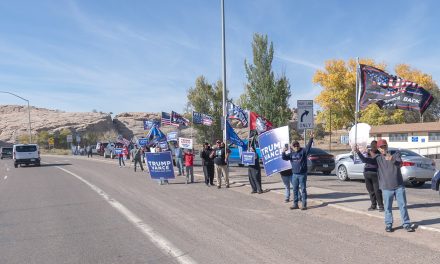
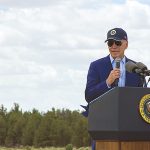

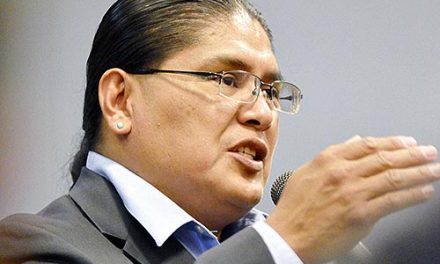


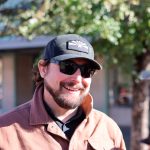

 Highway 264,
Highway 264, I-40, WB @ Winslow
I-40, WB @ Winslow